Hi GPODers!
We’re keeping the theme of gardens in transition going this week as we return to Carla Zambelli Mudry’s garden in Malvern, Penn. Carla has generously shared standout plants in her garden through the seasons for several years now (check out a sampling of her previous submissions here.). But Carla is treating us to a deep dive on spring this year. She has already shared her earliest spring blooms (Carla’s Early Spring Flowers Part 1 and Part 2) as well as some fabulous flowers and foliage during midseason (Carla’s Mid-Spring Flowers and Mid-Spring Foliage). Today we’re getting a look at her collection of roses and clematis as the garden inches closer to summer.
And just like that, the roses and clematis start to burst into bloom in all their splendor!
Roses were one of my first loves in the garden. The first rose I ever planted was a hybrid tea named John F. Kennedy, and I planted it with my father when I was a very little girl.
Then, in the 90s, I discovered antique roses, old roses, found roses, and David Austin English roses.
Because I live with woods, I have discovered that English roses and antique roses are the best for the garden. They are the most disease resistant and pest resistant.
People often think roses are difficult to grow, and they actually aren’t. What they require, however, is a good routine—that’s cleaning up after them, regular feeding, good pruning, and things of that nature.
 Carla has an impressive collection of roses that we will only see a sampling of in this post, but it felt appropriate to start with this stunning pair in that quintessential bright pink-red color.
Carla has an impressive collection of roses that we will only see a sampling of in this post, but it felt appropriate to start with this stunning pair in that quintessential bright pink-red color.
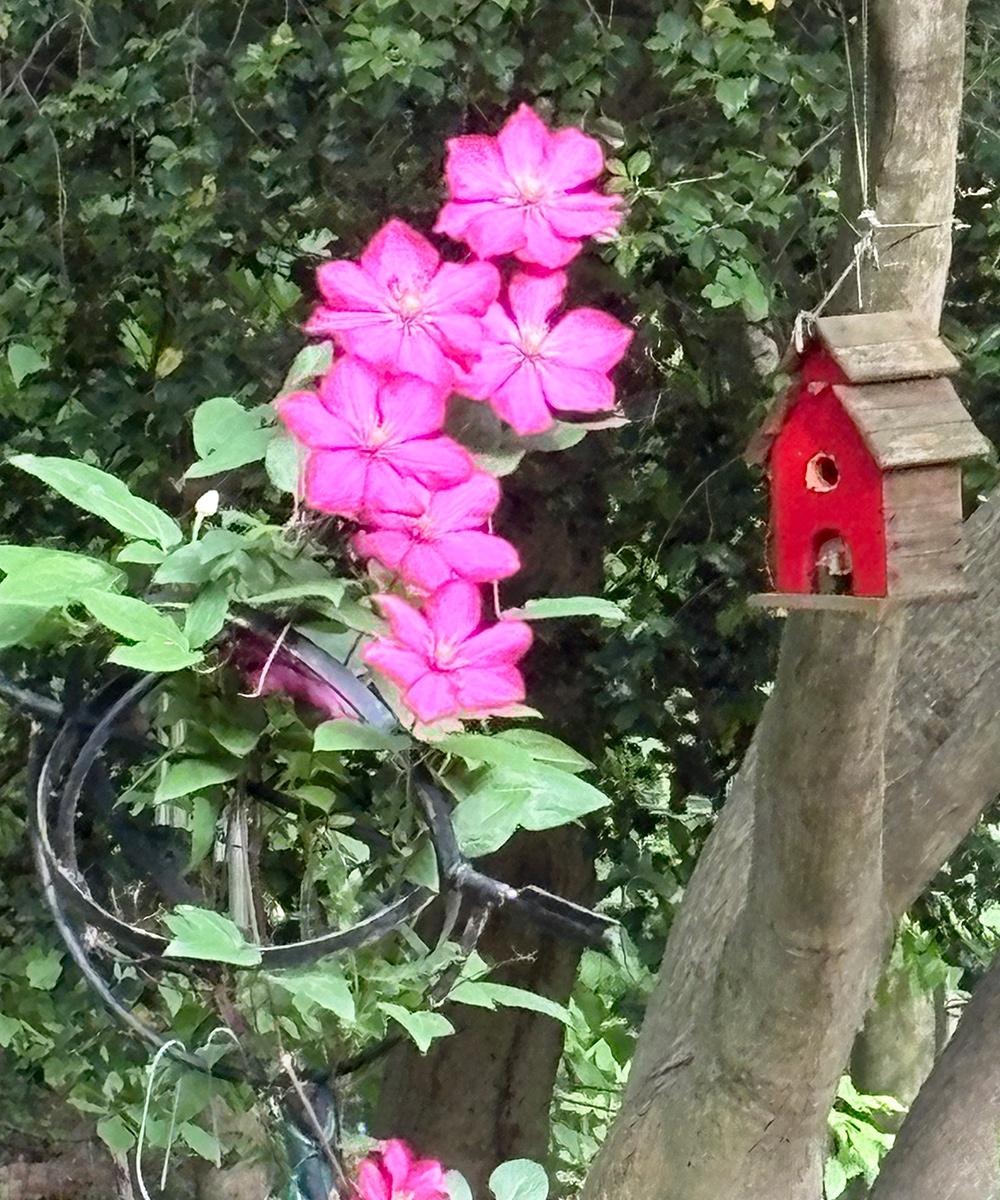 Along with her collection of roses, Carla has an assortment of clematis in a range of exciting colors. I adore how she’s growing this bright pink variety on an unconventional trellis that adds even more interest and allows it to grow up next to her bright red birdhouse.
Along with her collection of roses, Carla has an assortment of clematis in a range of exciting colors. I adore how she’s growing this bright pink variety on an unconventional trellis that adds even more interest and allows it to grow up next to her bright red birdhouse.
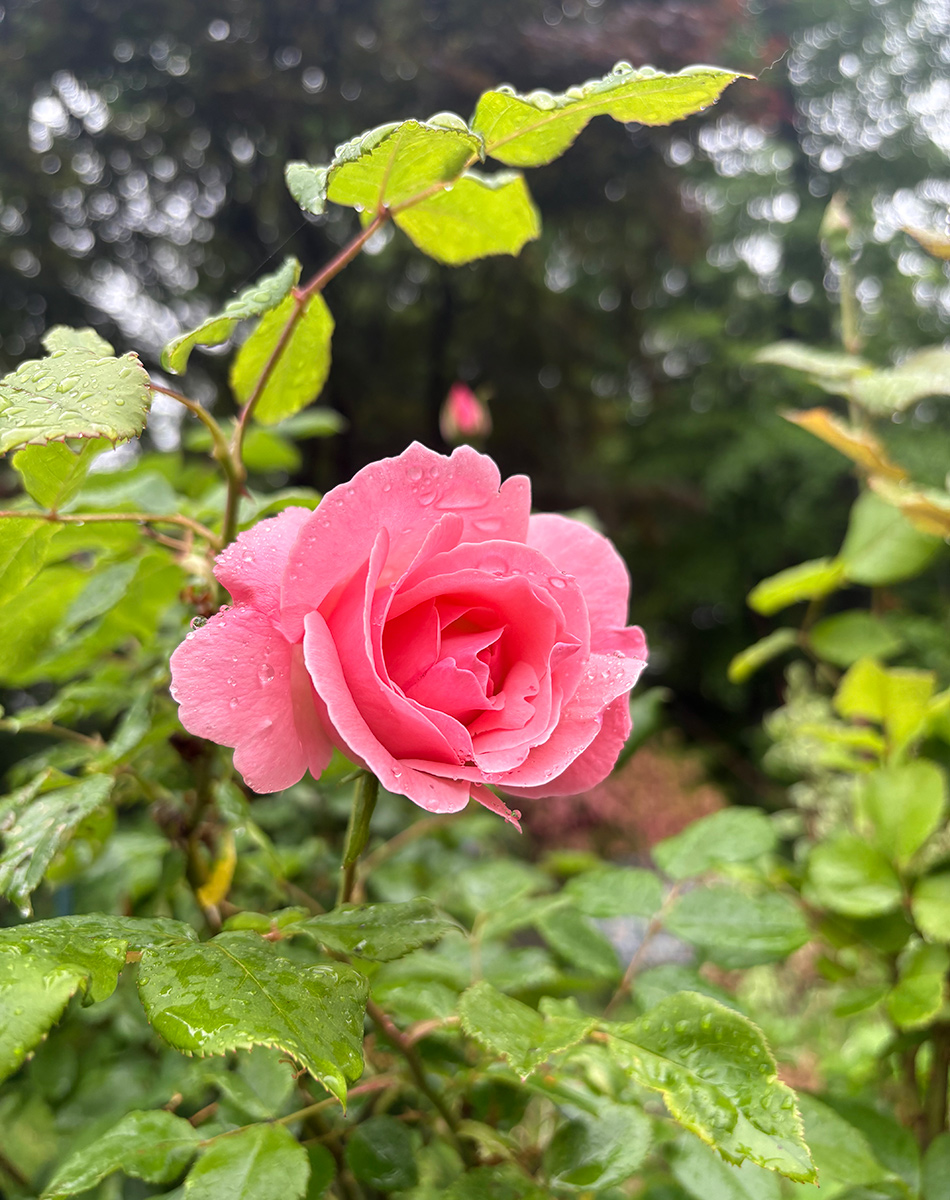 The simple beauty of a single rose covered in droplets from a fresh rain.
The simple beauty of a single rose covered in droplets from a fresh rain.
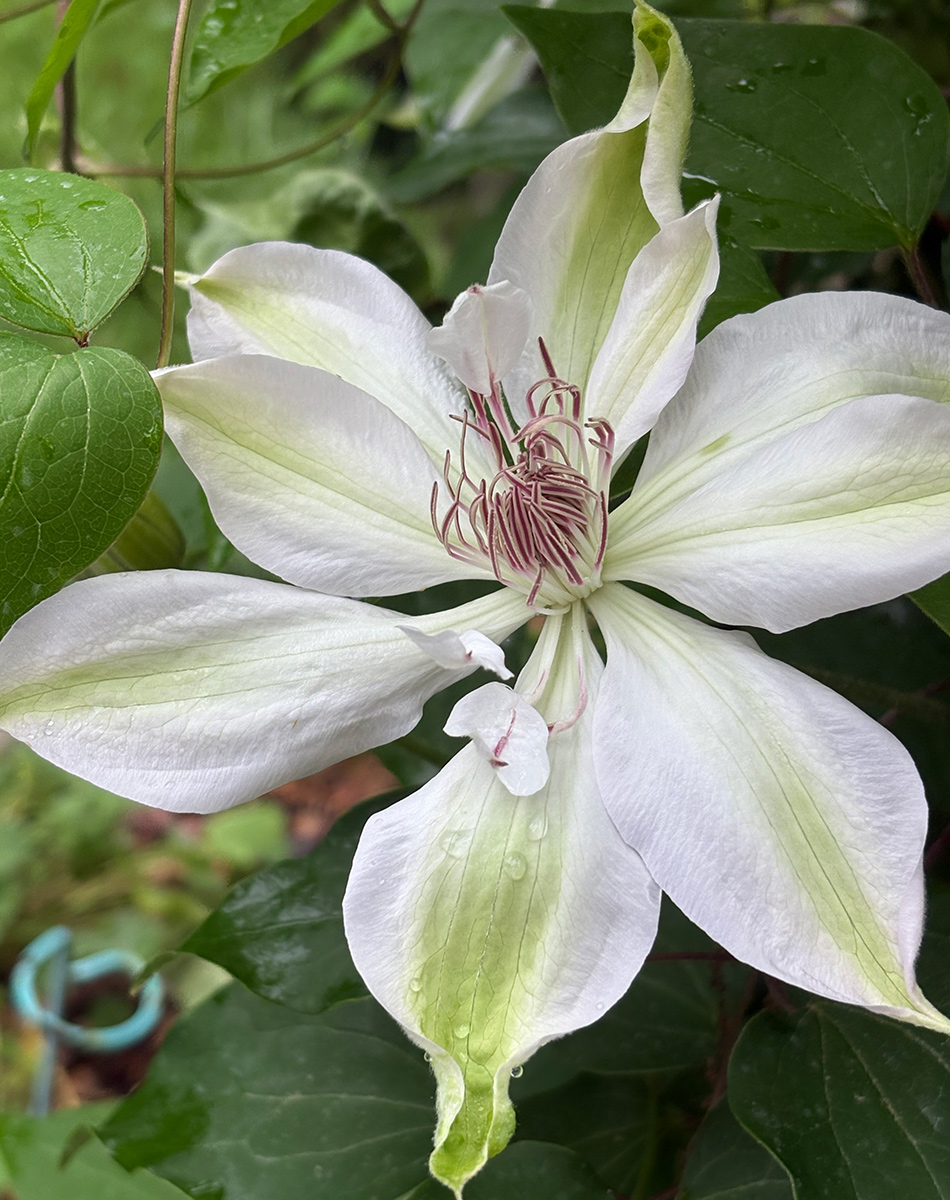 While clematis might be synonymous with the various shades of purple and pink they’re most often utilized for, there are some equally incredible very light to white varieties. This might be the Henryi cultivar (Clematis ‘Henryi’, Zones 4–8).
While clematis might be synonymous with the various shades of purple and pink they’re most often utilized for, there are some equally incredible very light to white varieties. This might be the Henryi cultivar (Clematis ‘Henryi’, Zones 4–8).
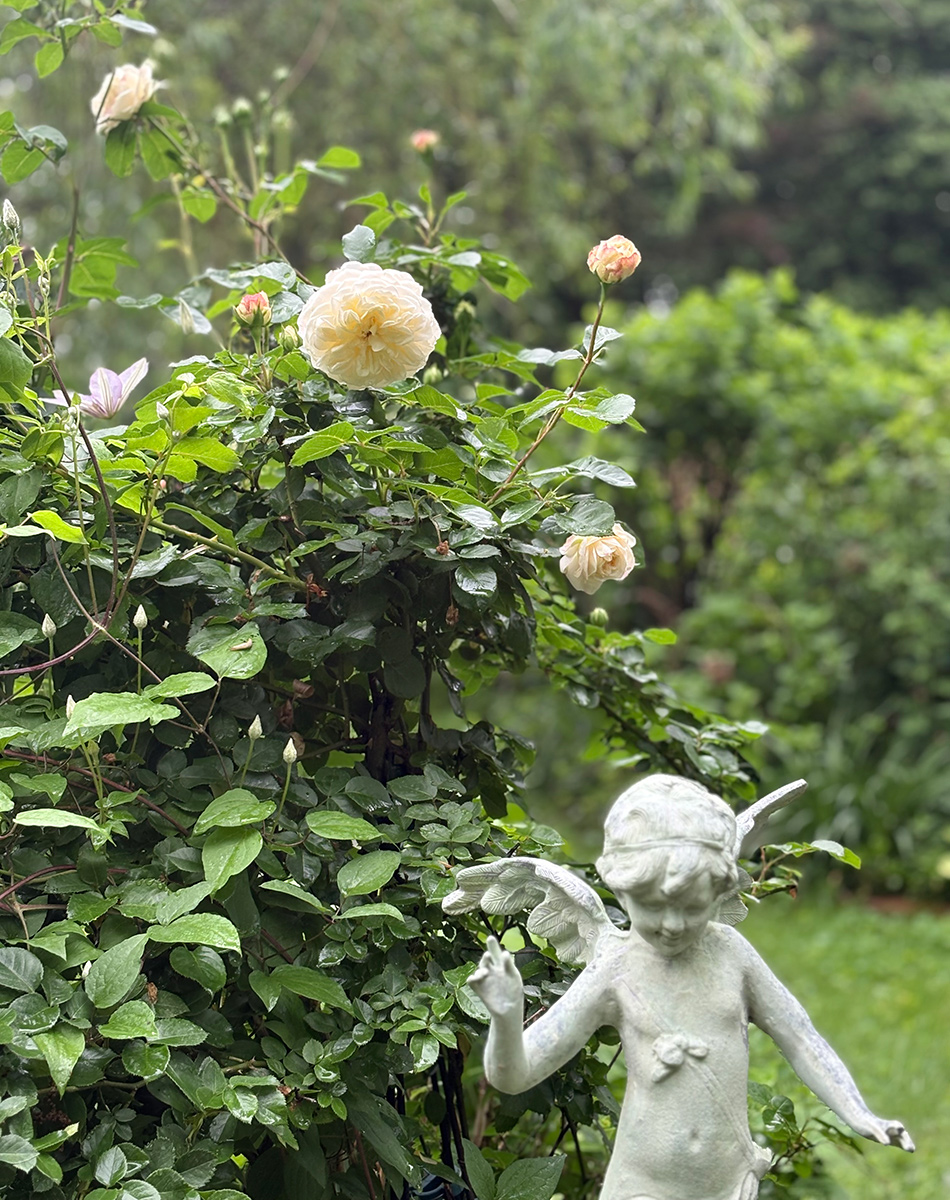 White roses can be more commonplace, but I really love this creamy color.
White roses can be more commonplace, but I really love this creamy color.
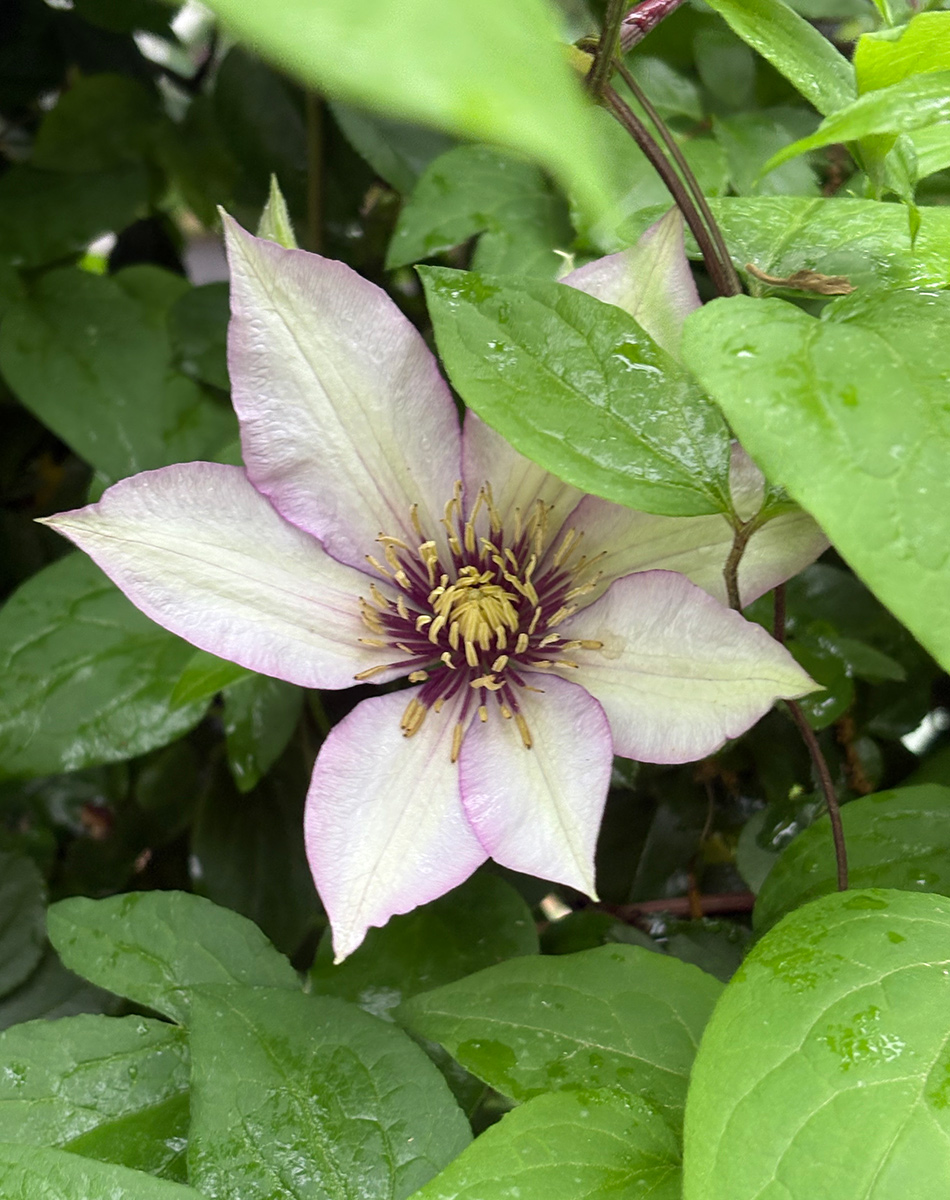 Another light clematis that is a great companion to the whiter cultivar above, this must be a Boulevard® Samaritan Jo™ clematis (C. ‘Evipo075’, Zones 4–9). The subtle purple edges on these blooms are just dreamy.
Another light clematis that is a great companion to the whiter cultivar above, this must be a Boulevard® Samaritan Jo™ clematis (C. ‘Evipo075’, Zones 4–9). The subtle purple edges on these blooms are just dreamy.
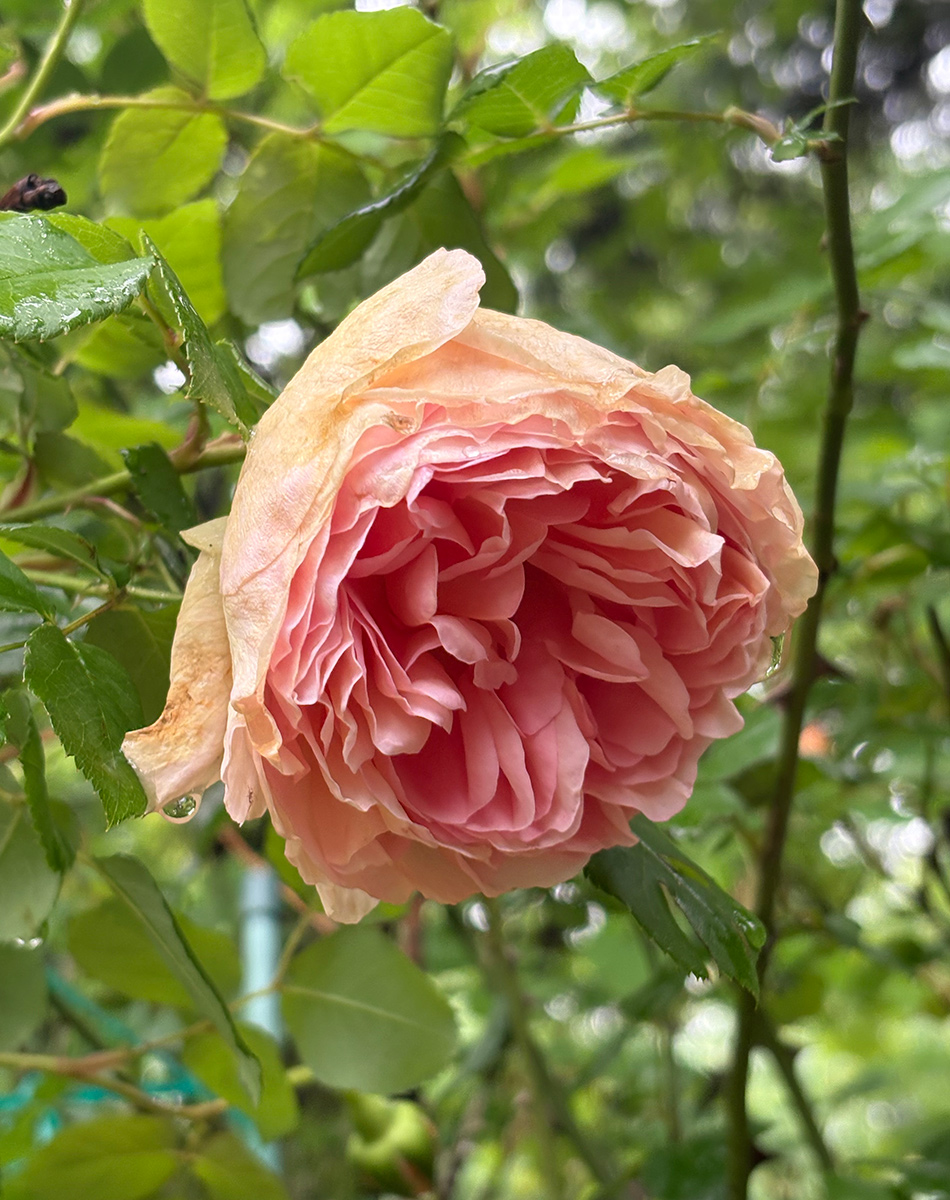 Many of the roses that Carla mentioned grow best in her garden—antique roses, old roses, English roses—often have incredible double forms with an unimaginable number of petals packed into each bloom. This peachy variety is an excellent example.
Many of the roses that Carla mentioned grow best in her garden—antique roses, old roses, English roses—often have incredible double forms with an unimaginable number of petals packed into each bloom. This peachy variety is an excellent example.
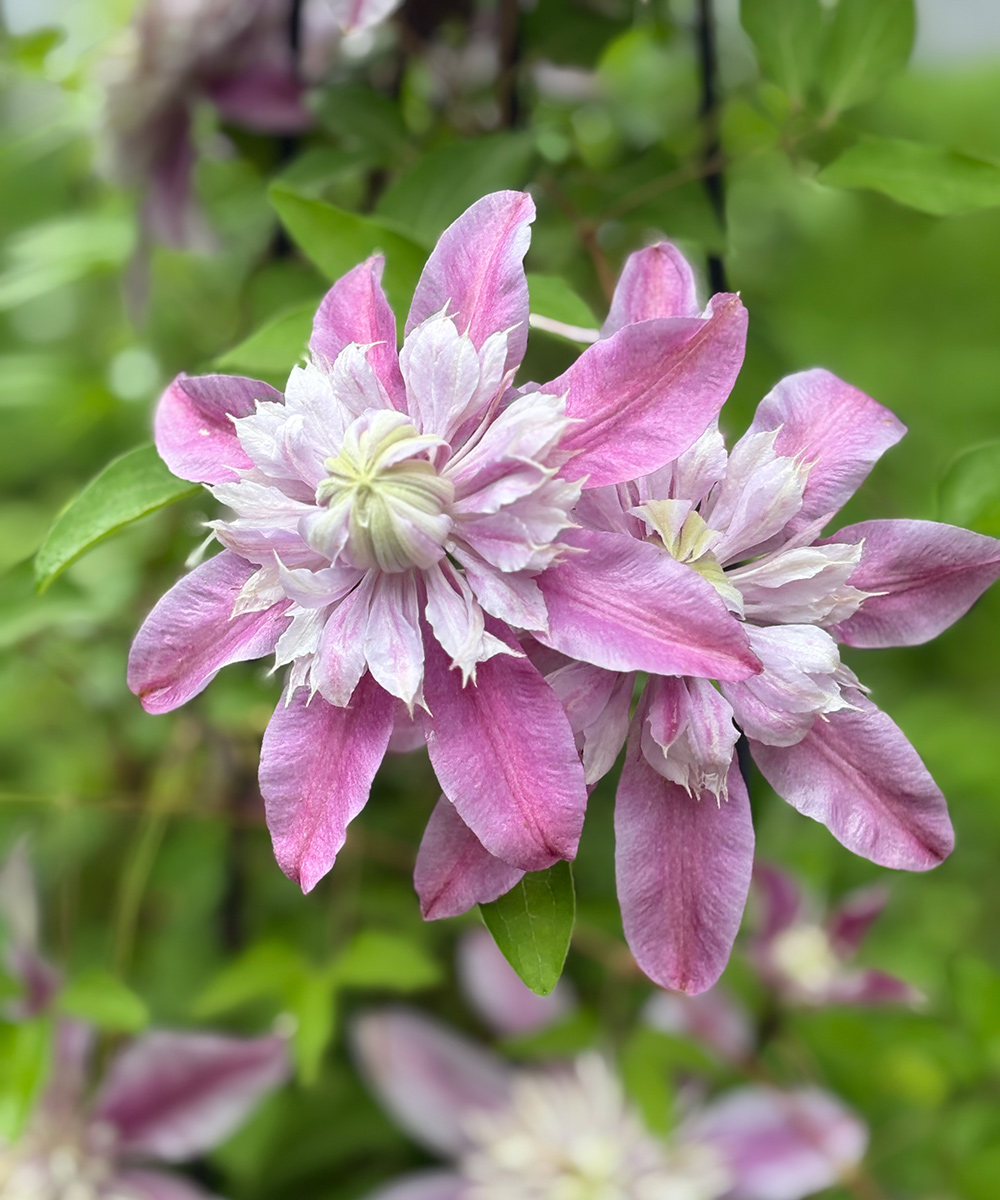 Yes, clematis come in double forms too! These ruffly Josephine clematis (C. ‘Evijohill’, Zones 4–9) are absolutely sensational.
Yes, clematis come in double forms too! These ruffly Josephine clematis (C. ‘Evijohill’, Zones 4–9) are absolutely sensational.
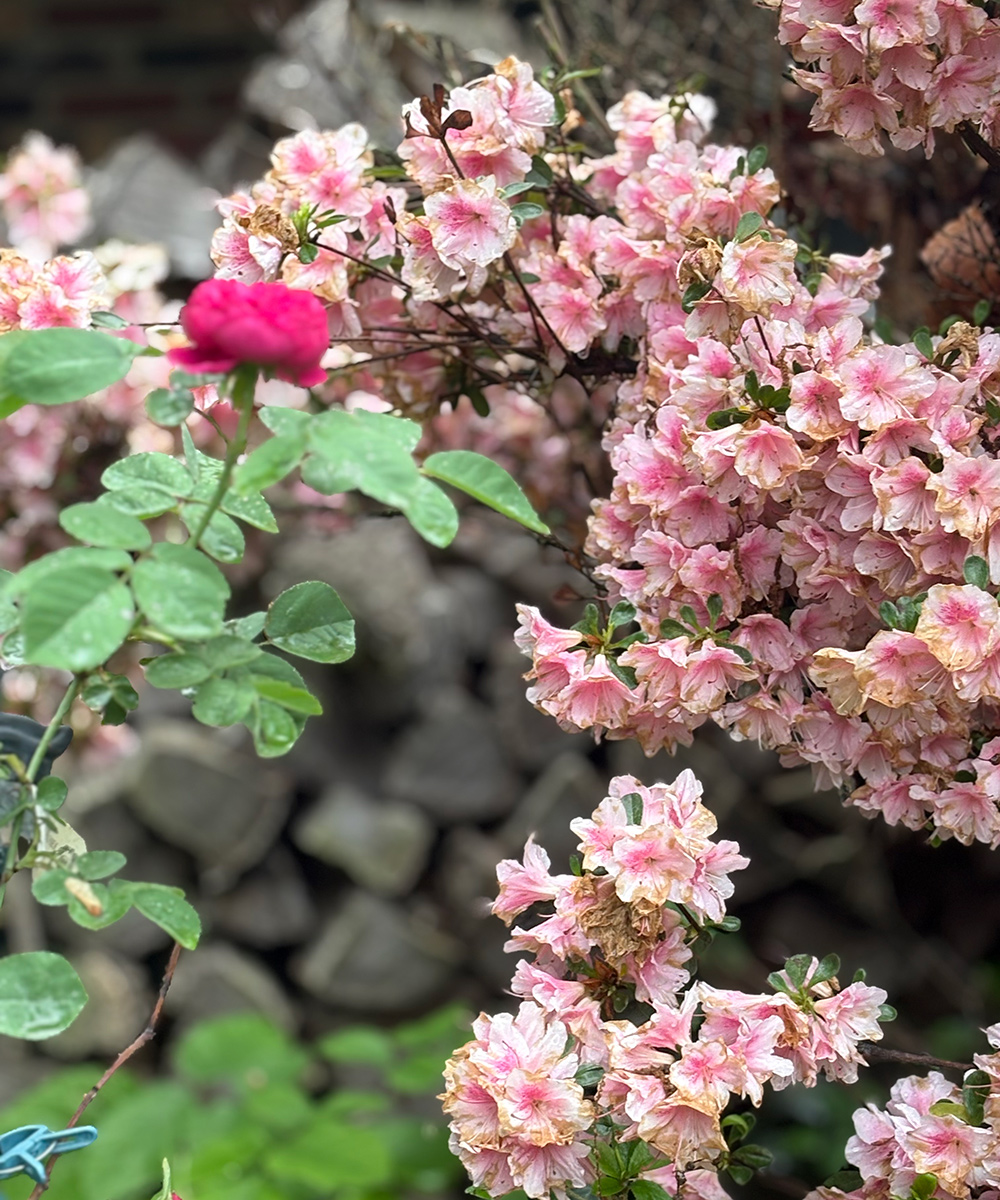 A bright pink rose is backdropped with what must have been the tail end of Carla’s azalea blooms. The flowers on this shrub are starting to fade, but plenty of beautiful, peachy-pink color remains.
A bright pink rose is backdropped with what must have been the tail end of Carla’s azalea blooms. The flowers on this shrub are starting to fade, but plenty of beautiful, peachy-pink color remains.
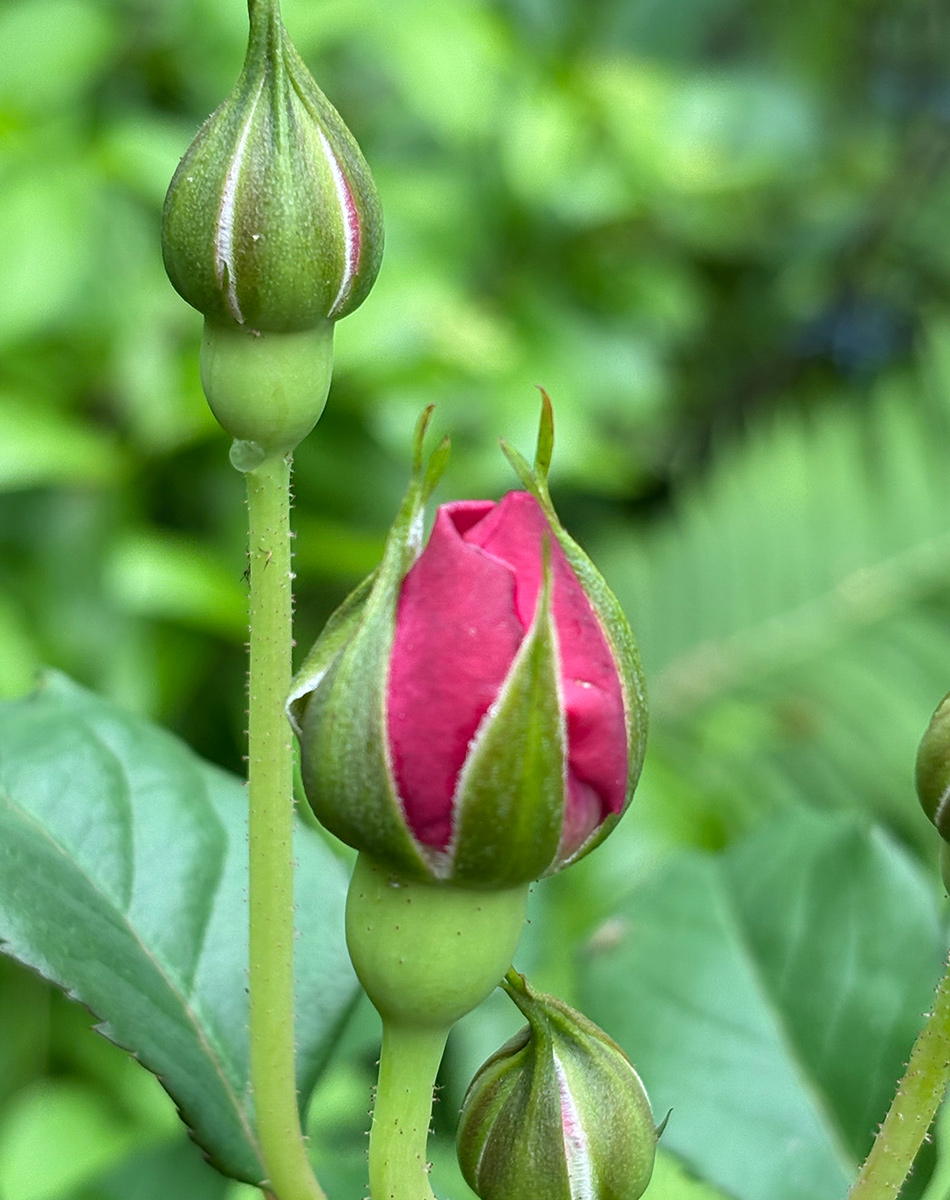 Some ripe rosebuds just starting to open and reveal more blooms for this colorful display. One of the most exciting aspects of spring is that it is just the beginning of the garden show!
Some ripe rosebuds just starting to open and reveal more blooms for this colorful display. One of the most exciting aspects of spring is that it is just the beginning of the garden show!
I could not fit all of Carla’s incredible roses and clematis into this post, but thankfully she included this great video slideshow to showcase more of her enviable collection.
Thank you for sharing yet another wonderful assortment of spring blooms with us, Carla! No matter how many times you share your stunning garden, there is always an exciting plant I haven’t noticed before or something new to admire.
What plants in your garden signal the end of spring and start of summer? Does your space slowly transform as temperatures rise, or does summer arrive in your outdoor space all at once? Let us know how your garden’s summer transition is going by leaving a comment or sharing your photos with the blog! Follow the directions below to submit photos via email, or send me a DM on Instagram: @agirlherdogandtheroad.
We want to see YOUR garden!
Have photos to share? We’d love to see your garden, a particular collection of plants you love, or a wonderful garden you had the chance to visit!
To submit, send 5–10 photos to [email protected] along with some information about the plants in the pictures and where you took the photos. We’d love to hear where you are located, how long you’ve been gardening, successes you are proud of, failures you learned from, hopes for the future, favorite plants, or funny stories from your garden.
Have a mobile phone? Tag your photos on Facebook, Instagram or Twitter with #FineGardening!
Do you receive the GPOD by email yet? Sign up here
Fine Gardening Recommended Products
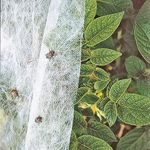
Gardener’s Supply Company Summerweight Fabric Plant Cover
Fine Gardening receives a commission for items purchased through links on this site, including Amazon Associates and other affiliate advertising programs.
Ideal for summertime pest control, this garden cover effectively screens out Japanese beetles, potato beetles, cabbage worms, leaf miners, carrot flies and most vine borers. It transmits 97.6% of the light to your plants without allowing heat build-up, and it provides cold protection down to 41° F, to extend your growing season.
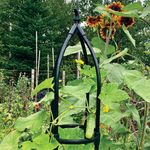
Lee Valley Garden Obelisks
Fine Gardening receives a commission for items purchased through links on this site, including Amazon Associates and other affiliate advertising programs.
Sturdy yet lightweight, these obelisks provide ample support for climbing plants while being easy to install and move. The medium obelisk stands 68 1/2″ high overall with a diameter of about 9 1/2″, compact enough for smaller containers indoors or out. The large size stands 86 1/2″ high with a diameter of 15 3/4″, ideal for larger outdoor spaces and containers.
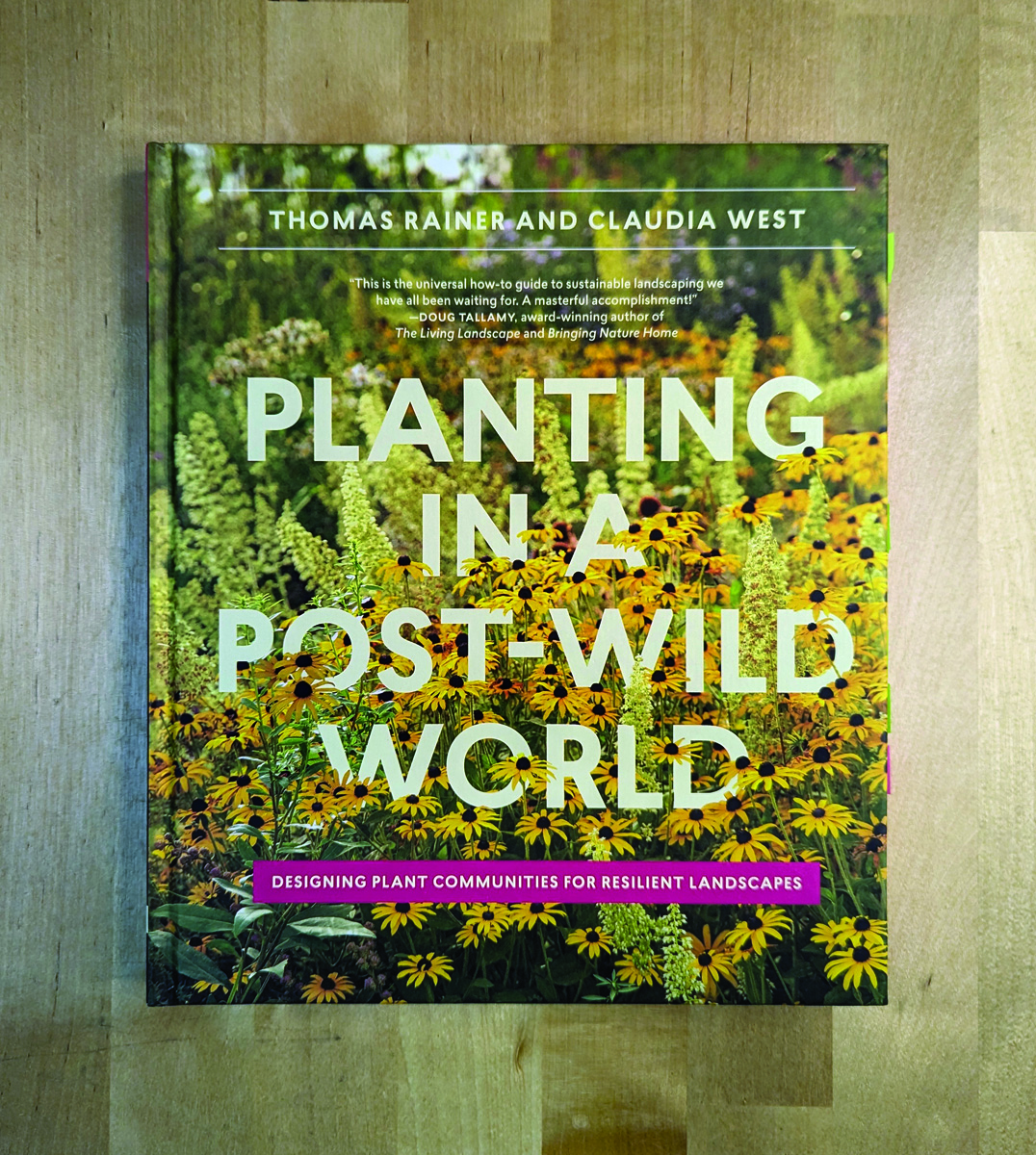
Planting in a Post-Wild World: Designing Plant Communities for Resilient Landscapes
Fine Gardening receives a commission for items purchased through links on this site, including Amazon Associates and other affiliate advertising programs.
Featuring gorgeous photography and advice for landscapers, Planting in a Post-Wild World by Thomas Rainer and Claudia West is dedicated to the idea of a new nature—a hybrid of both the wild and the cultivated—that can nourish in our cities and suburbs.




